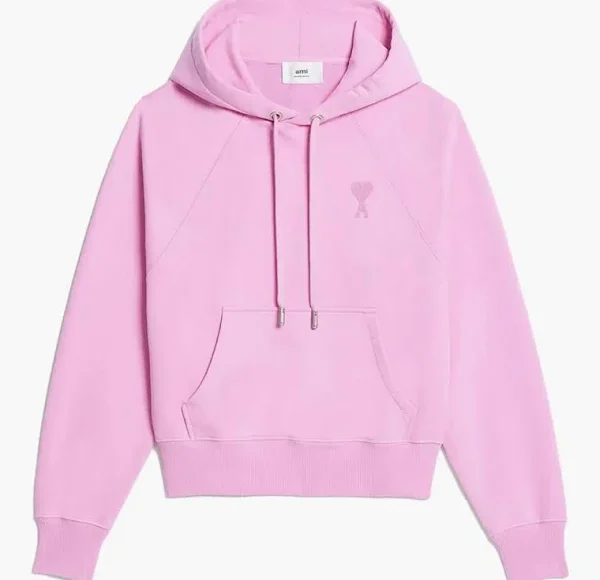Understanding Social Media Influencer Marketing
Social media influencer marketing is a dynamic strategy that leverages the reach, authenticity, and popularity of social media personalities to promote brands, products, or services. These influencers have cultivated dedicated followings across platforms such as Instagram, TikTok, YouTube, LinkedIn, and Twitter, and their recommendations often hold significant sway with their audience. Unlike traditional advertising, influencer marketing taps into trust-based relationships, offering a more personalized, relatable, and engaging approach to digital promotion.
The Rise of Influencer Marketing in the Digital Era
In recent years, social media influencer marketing has transformed from a niche strategy into a mainstream marketing channel. As users spend more time on platforms like Instagram and TikTok, brands have recognized the immense power of aligning with content creators who resonate with specific audiences. From beauty and fashion to tech and finance, influencers exist in virtually every industry, and their content formats—from reels and stories to unboxing videos and tutorials—continue to drive massive engagement. Influencer marketing budgets have skyrocketed, with businesses allocating substantial portions of their digital ad spend to partnerships with influencers.
Types of Influencers Based on Reach and Niche
One of the strengths of influencer marketing lies in its scalability. Brands can collaborate with different types of influencers depending on their goals and budgets. Mega-influencers have over a million followers and often include celebrities or widely recognized personalities. Macro-influencers typically range from 100,000 to 1 million followers and offer a wide reach with significant audience trust. Micro-influencers have between 10,000 to 100,000 followers and are known for their niche appeal and high engagement rates. Nano-influencers, with fewer than 10,000 followers, offer ultra-targeted influence and are often perceived as highly authentic and relatable by their communities. Choosing the right type of influencer depends on campaign goals, target audience, and the desired level of reach versus engagement.
Why Social Media Influencer Marketing Works
The effectiveness of influencer marketing lies in authenticity and relatability. Consumers today are highly skeptical of traditional ads and tend to trust peer recommendations or authentic voices over polished marketing messages. Influencers create content that feels natural and unscripted, seamlessly integrating brand promotions into their everyday lives. Additionally, they often maintain two-way conversations with their followers, making their endorsements feel more like trusted suggestions than hard-sell advertising. This level of engagement fosters deeper brand connections and can significantly boost awareness, loyalty, and sales.
Key Platforms for Influencer Marketing
Each social media platform offers unique opportunities for influencer marketing. Instagram remains a favorite for lifestyle, fashion, beauty, and fitness influencers due to its visual-centric format. TikTok has emerged as a powerhouse for viral marketing, particularly among Gen Z audiences, thanks to its short-form video content and trend-driven culture. YouTube is ideal for in-depth product reviews, tutorials, and vlogs, offering long-form content that can dive deep into brand storytelling. LinkedIn is effective for B2B influencer collaborations, especially in professional services and SaaS industries. Twitter is suitable for thought leadership and real-time engagement, particularly around trending topics or events.
Benefits of Social Media Influencer Marketing for Brands
Social media influencer marketing offers several compelling benefits for brands looking to expand their reach and deepen audience engagement. Firstly, it enhances brand credibility and trust, as influencers often have a loyal following that values their opinions. Secondly, it helps reach targeted demographics, as influencers cater to specific niches, allowing brands to pinpoint and connect with their ideal customers. Thirdly, influencer marketing drives higher engagement compared to traditional ads, thanks to the entertaining and interactive nature of social content. Fourth, it generates user-generated content (UGC) that can be repurposed across brand channels, saving time and money on content creation. Finally, it supports SEO and brand visibility through backlinks, brand mentions, and increased online buzz.
Creating a Successful Influencer Marketing Strategy
To leverage influencer marketing effectively, brands need a well-structured strategy. The first step is defining clear goals—these could include increasing brand awareness, boosting sales, driving traffic, launching new products, or enhancing social media presence. Next, identify the right influencers based on your niche, audience, and campaign objectives. Consider factors like follower count, engagement rate, content style, values alignment, and audience demographics. Establish KPIs to measure campaign success, such as reach, impressions, clicks, conversions, or ROI. Develop a compelling campaign brief that outlines brand guidelines, messaging, creative direction, and deliverables. Maintain open communication throughout the partnership and encourage creative freedom to let influencers connect authentically with their audience.
Best Practices for Influencer Collaboration
Successful influencer partnerships are built on mutual respect, transparency, and alignment. Always ensure contracts are in place that cover scope of work, compensation, timelines, content usage rights, and disclosure requirements. Be transparent about sponsorships to maintain authenticity and comply with platform guidelines and legal requirements. Allow influencers to create content in their own voice and style—they know their audience best. Provide them with sufficient product information, brand insights, and support to craft meaningful stories. Monitor performance metrics and provide feedback to strengthen ongoing relationships. Finally, express appreciation and consider long-term collaborations to build stronger brand affinity and consistency.
Measuring the ROI of Influencer Marketing Campaigns
Measuring the return on investment (ROI) is critical for assessing the success of influencer marketing efforts. Key performance indicators (KPIs) can vary based on campaign objectives but often include engagement rate (likes, comments, shares), reach and impressions, website traffic, click-through rate (CTR), sales and conversions, and follower growth. Use UTM links, custom discount codes, affiliate tracking, or platform analytics to attribute performance accurately. Beyond quantitative data, also evaluate qualitative outcomes such as brand sentiment, audience feedback, and content quality. Over time, these insights will inform which influencer strategies are most effective and help optimize future campaigns.
Common Challenges in Influencer Marketing
While influencer marketing is powerful, it also comes with challenges. Identifying the right influencers can be time-consuming and requires thorough vetting to avoid fake followers or low engagement. Ensuring alignment between the brand and the influencer’s values is crucial to prevent reputational risks. Managing multiple influencer relationships, negotiating contracts, and coordinating deliverables can be complex without a dedicated strategy or team. Tracking results across different platforms and attributing sales or leads can also pose difficulties without the right tools. Budget constraints may limit collaborations with top-tier influencers, but micro and nano-influencers offer cost-effective alternatives. Finally, maintaining authenticity and avoiding overly commercialized content is essential to prevent audience backlash.
The Role of Influencer Marketing Agencies and Tools
To streamline influencer marketing, many brands turn to influencer marketing agencies or use influencer discovery and management platforms. Agencies offer end-to-end campaign management, from influencer scouting to content approval and performance tracking. They bring industry expertise, established networks, and negotiation support. Influencer platforms like Aspire, Upfluence, CreatorIQ, and HypeAuditor allow brands to search for influencers, manage outreach, track performance, and generate campaign reports. These tools improve efficiency, accuracy, and scalability, especially for brands running multiple influencer campaigns across different markets.
Trends Shaping the Future of Influencer Marketing
The influencer marketing landscape continues to evolve rapidly. One major trend is the rise of nano and micro-influencers, as brands seek more authentic, localized connections. Long-term partnerships are replacing one-off sponsorships to build stronger brand associations. Performance-based influencer marketing is gaining traction, with influencers being compensated based on actual results such as clicks or sales. There’s also a growing emphasis on diversity and inclusion, with brands seeking to work with influencers from varied backgrounds and communities. Livestream shopping and shoppable posts are merging influencer content with e-commerce, driving instant conversions. Artificial intelligence is being used to analyze influencer performance and detect fraud. Meanwhile, creators are launching their own product lines, turning influencer marketing into a two-way street between brands and creators.
How to Choose the Right Influencers for Your Brand
Selecting the right influencers starts with understanding your target audience and marketing goals. Research influencers whose content, tone, and values align with your brand personality. Analyze their audience demographics, engagement rates, past collaborations, and content quality. Look beyond follower count—engagement, authenticity, and trust are more important. Tools like BuzzSumo, Social Blade, and HypeAuditor can provide valuable insights. Conduct outreach with a personalized message, clearly stating your expectations and what value you can offer. Offer fair compensation, whether through monetary payments, product gifting, or affiliate commissions. Track performance and cultivate long-term partnerships to maximize the impact.
Influencer Marketing for Small Businesses and Startups
Social media influencer marketing is not just for big brands—small businesses and startups can benefit tremendously by working with micro and nano-influencers. These influencers often have stronger engagement and can provide a personal touch that large campaigns lack. Local influencers can help small businesses connect with communities and build awareness organically. Budget-friendly strategies like gifting products, offering exclusive discount codes, or collaborating on giveaways can go a long way. Influencer-generated content can also be repurposed for ads, websites, and social proof. By building genuine relationships and focusing on authenticity, small businesses can unlock massive growth through influencer partnerships.
Legal and Ethical Considerations in Influencer Marketing
Transparency is essential in influencer marketing. Regulatory bodies such as the FTC (U.S.) and ASA (UK) mandate clear disclosure of sponsored content to protect consumers from deceptive advertising. Influencers must use hashtags like #ad, #sponsored, or platform-specific tools to indicate paid partnerships. Contracts should outline disclosure guidelines, content rights, exclusivity clauses, and deliverables. Brands must also respect influencer autonomy and avoid scripting or over-controlling the messaging. Ethically, it’s important to promote safe, inclusive, and responsible messaging, especially when targeting young or vulnerable audiences.
Conclusion: The Power of Influencer Marketing in the Digital Age
Social media influencer marketing has emerged as a transformative force in digital advertising, offering a powerful combination of authenticity, engagement, and targeted reach. As consumers increasingly seek real connections and trusted voices, influencer partnerships provide a unique opportunity for brands to communicate, connect, and convert. By embracing a strategic, ethical, and relationship-driven approach, businesses of all sizes can harness the full potential of influencer marketing to build brand loyalty, drive sales, and stay ahead in a competitive digital landscape.














Leave a comment